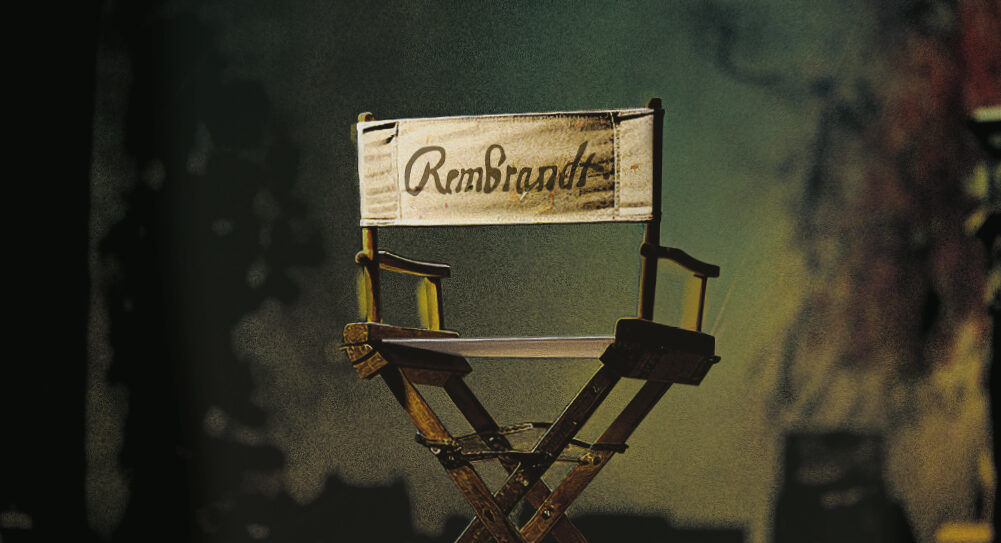Rembrandt as director in the spotlights
|
Rembrandt was a master storyteller, not with words but with images. To tell stories, he made use of techniques that were also used in the theatre, such as facial expressions, gestures, lighting, costumes, and accessories. In addition, he chose the best moment to depict: the moment of greatest tension, of ultimate suspense. The exhibition Directed by: Rembrandt highlights, for the first time, Rembrandt’s role as a director of his own artworks. And it reveals how 17th-century painters and theatre-makers were inspired by each other. |
A number of masterpieces are coming to Museum Rembrandthuis for the exhibition, from the Staatliche Museen zu Berlin, Mauritshuis and The Kremer Collection, among others.
Seven Directing Techniques |
 |
|
Just like theatre directors, Rembrandt manipulated all elements in his artworks at his discretion, aiming to depict a story as captivatingly and convincingly as possible. The main directing techniques he used are:
A painter can use the expression on a figure’s face to tell an important part of a story. For this, Rembrandt studied actors in the theatre. He also acted himself in front of the mirror in his studio. |
The Scandal |
|
The biblical character Susanna is about to take a bath. Two important men, elders, spy on her from the bushes. They whisper that they want to have sex with her. Susanna is startled. Rembrandt shows the ‘peripety’ of the moment: the turning point in the story is represented by Susanna turning away. Her eyes meet ours, and through that gaze, Rembrandt involves us in her predicament. The directing here is masterful because it does not get much more uncomfortable than this.
Terrible lie |
|
|
This painting is about a terrible lie. On the right is Potiphar, a courtier to the pharaoh. He listens to his wife telling him that she was almost raped by Joseph. In reality, however, she herself accosted him. The shock on the face of Joseph–on the left–speaks volumes. In the Bible story, Joseph is not featured in this scene, but Rembrandt, as director of his own story, added him to clarify that a great injustice is being done. This painting was created by Rembrandt in the Rembrandt House and is returning for the first time to the place where it was made almost 400 years ago. |
The Perfect Turban |
|
|
According to several of Rembrandt’s pupils, he could spend two days winding a turban. Apparently, he took time to assemble various parts of a costume before beginning to paint or draw them. He probably took similar care to prepare this study of an old man. Rembrandt made this study in preparation for depicting the high priests in his painting Judas Repentant (1629). He wanted to know exactly how the light falls on the back of the head of a man wearing a turban. |
Four stories, One image |
|
|
Usually, artworks depict a single moment, a single scene. This is the same in theatre, where the unity of time, place, and action is a golden rule. But, in this etching, Rembrandt brought together four moments from a single Bible story as if they had taken place at the same time. Like a director, he placed his figures in a well-balanced troep (group), alternated their height (sprong), and added plenty of verscheydenheydt (variety). The image is also full of drama and reminds us of the tableaux vivants that were popular in the Schouwburg theatre. |
Exhibition at the Stadsarchief Amsterdam
Concurrently with the exhibition Regie: Rembrandt, the Stadsarchief Amsterdam is organising a treasury exhibition highlighting the broader context of the Amsterdam Schouwburg, its playwrights and actors, and its role in the city.
The exhibition Directed by: Rembrandt will take place from 2 March to 26 May 2024 at Museum Rembrandthuis.
|
With thanks to: Mastercard, het Cultuurfonds, Rijksdienst voor het Cultureel Erfgoed, Huysgenoten van Museum Rembrandthuis, Kikkoman, Blockbusterfonds: Extra, Vrienden van Museum het Rembrandthuis, De Gijselaar-Hintzenfonds. |





